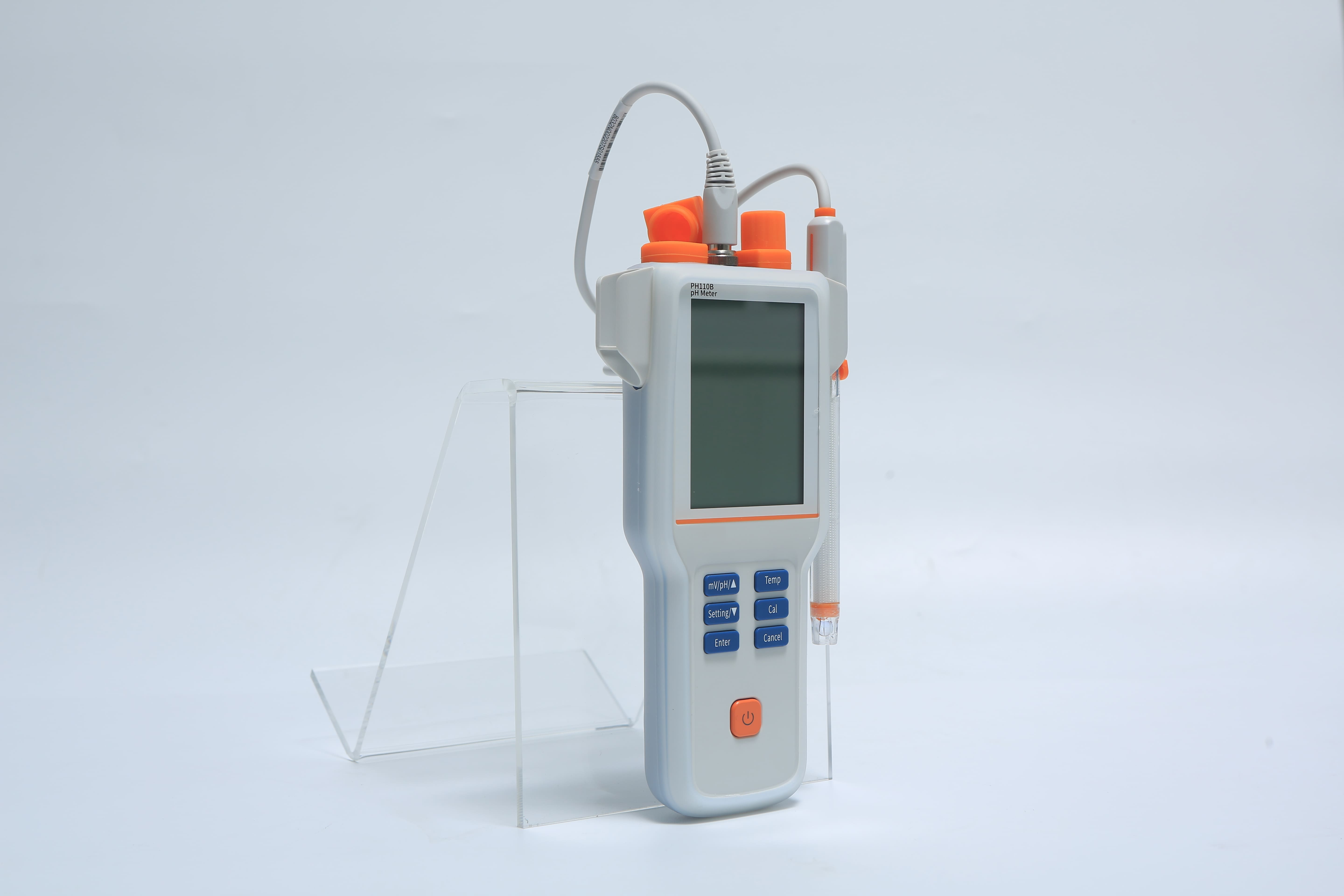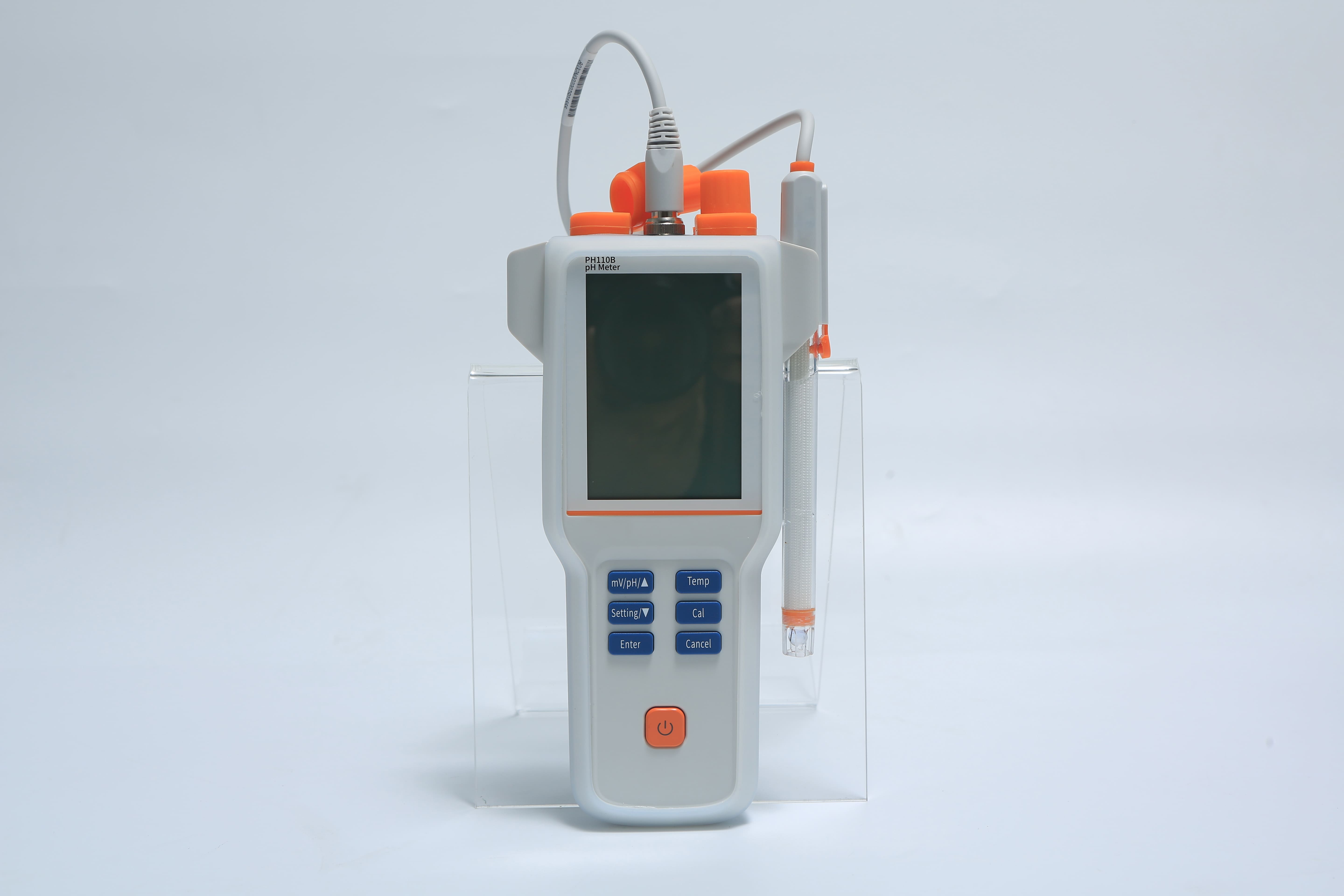The PH110B meter is an instrument used to determine the acidity and alkalinity of a solution, which can help us effectively control and adjust the pH value in the production process. The PH Meter is one of the indispensable instruments in modern industrial and laboratory operations. This article will explore in depth the working principle, usage methods and various applications of the pH meter in different fields.
How a pH Meter Works?
A pH meter basically measures the activity of hydrogen ions (H+) in a solution. The pH value is an indicator used to indicate the acidity or alkalinity of a solution, and its measurement range is usually 0-14. Within this range, 7 is defined as neutral, less than 7 is acidic, and greater than 7 is alkaline.

How does PH110B work?
What Does a pH Meter Consist of?
The reference electrode is used to maintain a constant potential as a control to measure various deviation potentials.
The glass electrode, whose potential depends on the pH value of the surrounding solution, is sensitive to hydrogen ions in the solution and produces a potential difference reaction to the change of hydrogen ions.
An ammeter that can measure a small potential difference in a circuit with very high resistance and display this change through an instrument.
Applications of pH Meter
pH meters are used in many different applications, including but not limited to:
1.Water quality monitoring:
Potable water: Ensure the quality of water is good for health.
Industrial water: The monitoring and control of water quality during the production process.
Wastewater treatment: pH monitoring, to determine if the waste water treatment meets the discharge standard.
2.Food Industry:
Food processing: Monitor food pH to prevent foodborne illnesses and prolong shelf life.
In beverage manufacturing: Manage the pH of the beverage for taste and quality.

3.Pharmaceutical industry:
Drug formulation: Monitoring the pH of drug solution is essential for maintaining drug stability and activity.
Clinical diagnosis: Body fluids; blood and urine pH determine health.
4.Environmental Science:
Environmental monitoring: Determine environmental changes, check the pH of natural water bodies (lakes, rivers).
Atmosphere Monitoring (Sampling of the impact of acid rain by measuring the pH of rain water.)
5.Chemistry / Materials Science:
Experimental studies: The pH of solution is monitored in chemical experiments to control reaction conditions.
Testing of materials: Testing for the corrosion resistance and stability of the material.
6.Makeup and Cosmetic Products:
Product quality control: The pH value of the product must reach skin safety standard.
7.Education and Research:
Teaching experiment: used in the teaching and experiment of chemistry, biology and other subjects.
Scientific research: The pH helps to measure multiple scientific experiments to obtain precise experimental data.
8.Swimming pool and spa:
Water quality management: Keeping an eye on the water quality of your swimming pools and spas and changing as per the requirement for hygiene and comfort.
Conclusion
A pH meter is a vital lab tool that enables us to manage pH effectively and monitor the pH of other solutions.
Due to the continuous updating and progress of technology, the application of pH meters will be wider.